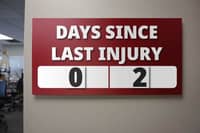Expert Commentary
Latest Articles
Additional Insured Issues
The Additional Insured Labyrinth: Pleadings and the Duty to Defend
Leadership at All Levels
Rewriting the Rules of Risk: Why Standing Still Is the Most Dangerous Move
Catastrophe Risk Management
Risk Scoring and Mapping Are Reshaping Property Insurance
Valuation of Insurance Organizations





















